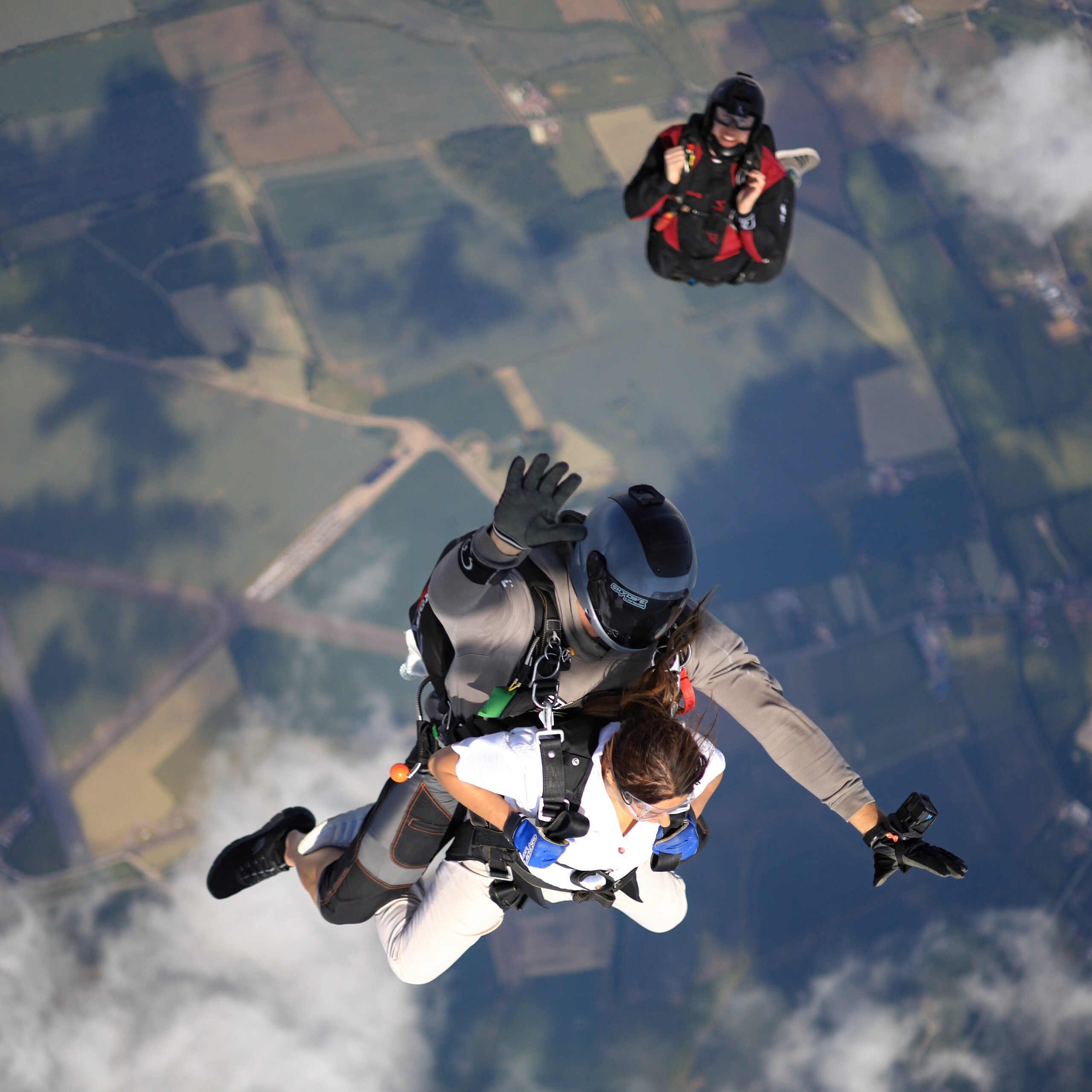Bring on the new digital companions
All images by Gary Wainwright
If it isn’t broken, don’t fix it. Right? But how are we defining “broken” here, anyway?
Think about rifling through a gear bag for the paper logbook you were sure went in the outside pocket – the same one you dropped in the dog’s water bowl last week and lost a few pages to the flood. Think about smooshing the tiny buttons on an altimeter with the pointy bit of your pinkie finger, over and over and over, until you get the timing right. Think about hearing your five-minute call as you’re frantically leafing through a fat little manual, desperate to incant the cryptic spell of a DZ offset.
Yeah, it’s not broken-broke, but it’s not not broken, either…
Happily, over the last couple of seasons, as you may have noticed, a few developers and manufacturers have been quietly un-breaking things. A slow, steady stream of new apps, each designed to work with the equipment we already use, aims to help us jump more wisely, analyse those jumps better and simplify the documentation that’s needed to progress through the sport.
Here, we’ll take a look at three interesting newcomers – Airtime BT, the CYPRES App and LB Altimeters’ JumpTrack – and investigate how they aim to make our dropzone lives just that much sweeter.
Airtime BT – unlocking the data from FlySight devices
The venerable FlySight has been the go‑to training tool for wingsuiters, swoopers and speed skydivers for more than a decade, yet most software designed to analyse the device’s data runs exclusively on laptops. Airtime BT aims to change that. The app, created by Guillaume Ferrand, is built on Jordan Gould’s open‑source Airtime: Infinite project and is designed to let jumpers access and analyse FlySight data directly on an iPhone.
The feature line-up
- Mix metric and imperial units. For jumpers who still use feet for altitude but metres for other data, this is a welcome touch.
- Automatically find the start of a swoop in the data, with the option to cut the display so only the swoop is shown. If no swoop is detected, it falls back to cutting the track between exit and landing.
- Use a competition-ready “speed run analysis” tool to see performance and validation windows as per competition standards. It also calculates tracking errors.
- Retrieve local elevation from an API and use it to calculate ground level even when there’s no internet access.
- See a speed polar chart, so wingsuit pilots can assess glide performance and their top three‑second average vertical speed.
- Lock the view, share and save tracks locally for detailed analysis.
- Connect via Bluetooth to the FlySight 2 – a fundamental improvement – but earlier FlySight units can still connect via USB.
The app remains free. However, since Airtime BT is an independent, open‑source passion project, there are no plans for an Android version. With that said, developer Ferrand is wide open to feedback regarding the additional functionality his app might facilitate in the future.

CYPRES App – a pocket manual, plus-plus
Airtec’s CYPRES automatic activation devices (AADs) have saved thousands of lives: far, far more lives than skydivers who can honestly say that they’ve read more than a page of the manual. And who can blame us? That’s a dense little black-and-purple bible, that manual. And where’d you put yours, anyway…?
Certainly not oblivious to this, the team at Airtec rolled up their collective sleeves and built an app for that. It’s not a classical app, it’s a PWA – that is to say, not a download, but a mobile-first interface that works across the full range of smartphones.
The app is designed to be triggered by the QR code on a CYPRES test certificate. Upon scan, that QR code opens a personalised web app that includes the unit’s serial number, service data and expiration date. It can be added to the home screen like a native app, and it works with no- or low-internet connection.
The feature line-up
- A library of short videos to walk you through how to perform adjustments (such as setting an altitude offset for landing at a higher or lower elevation, changing the activation altitude, and switching between modes) and answers to common questions.
- Country‑specific travel documents to get you through the airport gauntlet.
- A comprehensive list of error codes explains what each code means and what action to take.
- A clean little summary of your device’s service intervals.
The app currently supports only one device, which may limit those with multiple rigs, but Airtec reassures us that updates are on the way.
These apps are more than a little nifty, they are likely to influence how our sport evolves
JumpTrack – a digital logbook and altimeter controller
Ah, Larsen & Brusgaard – the sweetest of beeps; forever at the leading edge of altitude awareness, especially with the 2024-2025 releases of LB Altimeters’ Bluetooth‑enabled Optima 3, Quattro 3 and ProTrack 3 units. To manage these fancy new devices without hideous fiddliness (and to supplant paper logbooks; and to manage regular gear maintenance, to boot), LB created the JumpTrack app. It’s available for both iOS and Android and is described as “the next generation skydiving app” that lets users set warning altitudes, set offset altitudes, and import jump data from compatible altimeters.
The feature line-up
- Control your device from your phone, naturellement: set your climb‑to‑altitude, high‑speed and low‑speed warnings; turn the OPTIMA 3, QUATTRO 3 or PROTRACK 3 off remotely; set the time manually or synchronise it with your phone; choose between feet and metres and adjust volume and pitch.
- Use jump templates to quickly add jumps to your logbook.
- Track jumps made on a container, main, reserve and AAD, and to receive maintenance notifications (such as when your lines need replacing).
- Segregate the jumps in your logbook by tag so you can separate AFF, tandem, coach, hop‑and‑pop, events, aircraft or drop‑zone‑specific jumps at a glance.
- Export jump data with a digital signature.
- Keep a cloud‑based back-up of logbook and jump information.
Sure, JumpTrack currently only works with LB’s latest Bluetooth‑enabled altimeters, but for those invested in the LB eco-system, the benefits far outweigh the cost.
What’s next?
The introduction of these apps is more than a little nifty. It also reflects a broader trend: manufacturers have officially begun to use mobile device technology not just as a marketing add‑on but as an integral part of their safety and service offering.
As the next seasons unfold, we can expect that more of these tools are likely to become standard – and they’re more and more likely to influence how our sport evolves.




